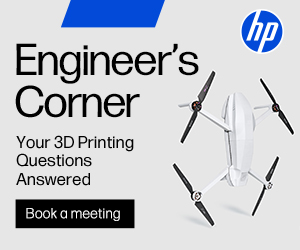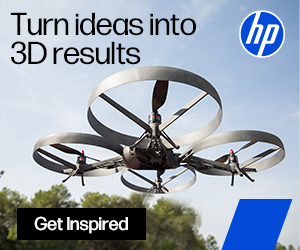Forward AM Technologies Releases Polymers for Pellet 3D Printing
BASF spinout Forward AM Technologies has released fused granulate fabrication (FGF) pellets, which are widely used in medium and large format machines to reduce costs. Material costs can significantly increase when parts weigh tens of kilos, making pellet extrusion systems on printers or robot arms common in these machines. The FGF world is relatively new, but the range of applications is vast. Large parts can be sold with significant margins and often result in cost savings in construction, boat building, large aerospace tooling, fixtures, and more. Applications for large and medium format printing are constantly being developed, from swimming pools to fountains and planters, with new parts emerging every day. These systems can output kilos of material per hour, meaning that for a materials firm, one printer or one client can move significant volumes.
I strongly believe that not enough attention, expertise, and investment has been directed toward the large and medium format world. There is still so much potential out there, and many markets yet to be conquered.
Forward AM has released rPETG, PP GF30, and PC GF30 pellets, adding to the popular materials for Fused Granulate Fabrication (FGF) such as ASA, ABS, and Ultem. These materials are promoted as being inexpensive, engineering-grade, and designed for easy printing. Given that large parts often warp, any material with additives or fiber reinforcement that reduces this issue is highly valued. The company aims to target the industrial jigs market, as well as automotive and aerospace sectors. Additionally, they see potential in outdoor and decorative items. The market for outdoor furniture, design pieces, signage, and sculptural items has been growing, making this a promising area to pursue.
The rPETG pellets are recycled and come in transparent, black, or blue. The recycled nature of these pellets is likely to drive adoption among designers and local governments, who are enthusiastic about sustainable materials. Think of headlines like “Smallville’s New Baseball Sculpture Made out of Used Water Bottles.” The company states that the material comes from a tradable industrial waste source, offers “superior optical performance,” and is easy to print.
The PP GF30 is a glass fiber-reinforced product that Forward AM Technologies hopes to sell to the industrial and automotive markets. This material is already common in the automotive sector, making it a familiar choice for companies in that industry. It is also used in shipbuilding and construction, where it is valued for its good surface finish, stiffness, and durability. Additionally, it typically prints well with low warp, shrinkage, and deformation.
The PC GF30 is a stiff, flame-retardant material with a UL 94 V-0 rating, which could be ideal for rail or automotive applications. The retrofit industry for rail and urban transportation vehicles is enormous, with billions being spent on repairing and upgrading trams, metro cars, stations, buses, and other vehicles. If this material gains widespread acceptance, it has the potential to really take off.
I think this is a smart move by Forward AM Technologies. Volumes in FGF are rising steadily, and applications in this space are rapidly expanding. Nowhere else in 3D printing do we see such a wide array of customers, applications, and use cases. The possibilities are vast, from construction and formwork to garden gnomes, Jacuzzis, carbon fiber tooling, trailer parts, and boat components. The road is wide open.
A single user can consume many tonnes of material, making large customers particularly valuable. Success in this area is also likely to remain under the radar, which means that having a strong market presence and a deep understanding of customer needs is extremely valuable. We’re already seeing a lot of profitability in medium and large format printing. This segment seems to be the perfect area for materials companies to excel. A deep focus and a well-crafted product portfolio tailored to the large and medium format markets is, in my view, exactly the right approach for the current moment.
Subscribe to Our Email Newsletter
Stay up-to-date on all the latest news from the 3D printing industry and receive information and offers from third party vendors.
Print Services
Upload your 3D Models and get them printed quickly and efficiently.
You May Also Like
OVERLEAF 3D Prints Cryogenic Tank For Aviation Liquid Hydrogen
Spanish technology center Aimen has 3D printed a cryogenic tank meant to store liquid hydrogen for use as aviation fuel. This test tank was made as a part of OVERLEAF,...
Low-cost “Suzy” Polymer Powder 3D Printer is Faster and Cheaper than Past Models
Polish laser powder bed fusion (LPBF) firm Sinterit has released a follow-up to its predecessors, Lisa and Nils, called Suzy, a $19,490 printer equipped with a 30W fiber diode laser....
OPPO Find N5: World’s Thinnest Foldable Smartphone Hinges on 3D Printed Hinges
OPPO has unveiled its latest foldable smartphone, the Find N5, demonstrating a significant step forward in the ongoing push for slimmer, more durable foldable devices. With a folded thickness of...
ADDMAN Adds Continuous Composites Technology for Hypersonics and UAV Applications
ADDMAN Group and Continuous Composites are teaming up to reshape how aerospace and defense sectors create parts for hypersonic vehicles and unmanned aerial vehicles (UAVs). Through this partnership, the two...































